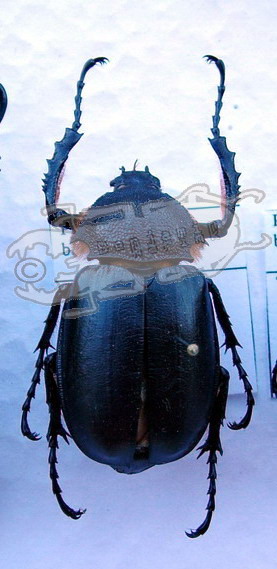Distribution:
Turkey
Breeding hints:
Before it made its way into the hand of breeders, Propomacrus bimucronatus was considered a very rare species. It is not attracted to light or bait and can often only be found in tree holes. Nowadays it is a readily available and of all Euchirinae the easiest to breed species.
I found that it is helpful if the substrate height is rather high to stimulate the females to lay eggs. The best substrate for egg laying is a rather fine rotten wood substrate (black coloured) with some larger pieces of white rotten wood. The overall development of the larvae is quite slow and the pupation stage is quite critical and losses in this stage can be expected. I found a good, but space consuming method, is to offer the late L3 larvae a 10 ltr box filled with substrate and a big piece of white rotten wood. The larvae were often pupating inside this piece and managed to get through the pupation stage successfully. It is also advisable to slightly reduce the humidity during pupation.
Interesting Links:
Please suggest links that offer more information about this species
Specimen Pictures:
Pictures of living specimen:
All Pictures © Copyright of their respective owners.
Design and Text © Copyright of Benjamin Harink, any use is strictly prohibited, for details contact: hankypanky79@hotmail.com





Vielen Dank Benjamin !
Es ist edel, schön und allen nützlich (auch den Käfern) , dass Du Dein Wissen teilst.
Meine zwei Prop. bim. wachsen stetig, langsam und sehr ortstreu vor sich hin.
Daniel Ambühl
Hi Daniel,
Danke, das freut mich, dass es bei deinen beiden Larven klappt. Euchirinae sind in der Tat sehr inaktiv und ortstreu. Ich habe auch Larven von Cheirotonus jansoni, die haben fast 6 Monate gebraucht um von L1 auf L2 zu wachsen. Tja, wir haben ja Zeit 😉
Liebe Grüsse
Benjamin